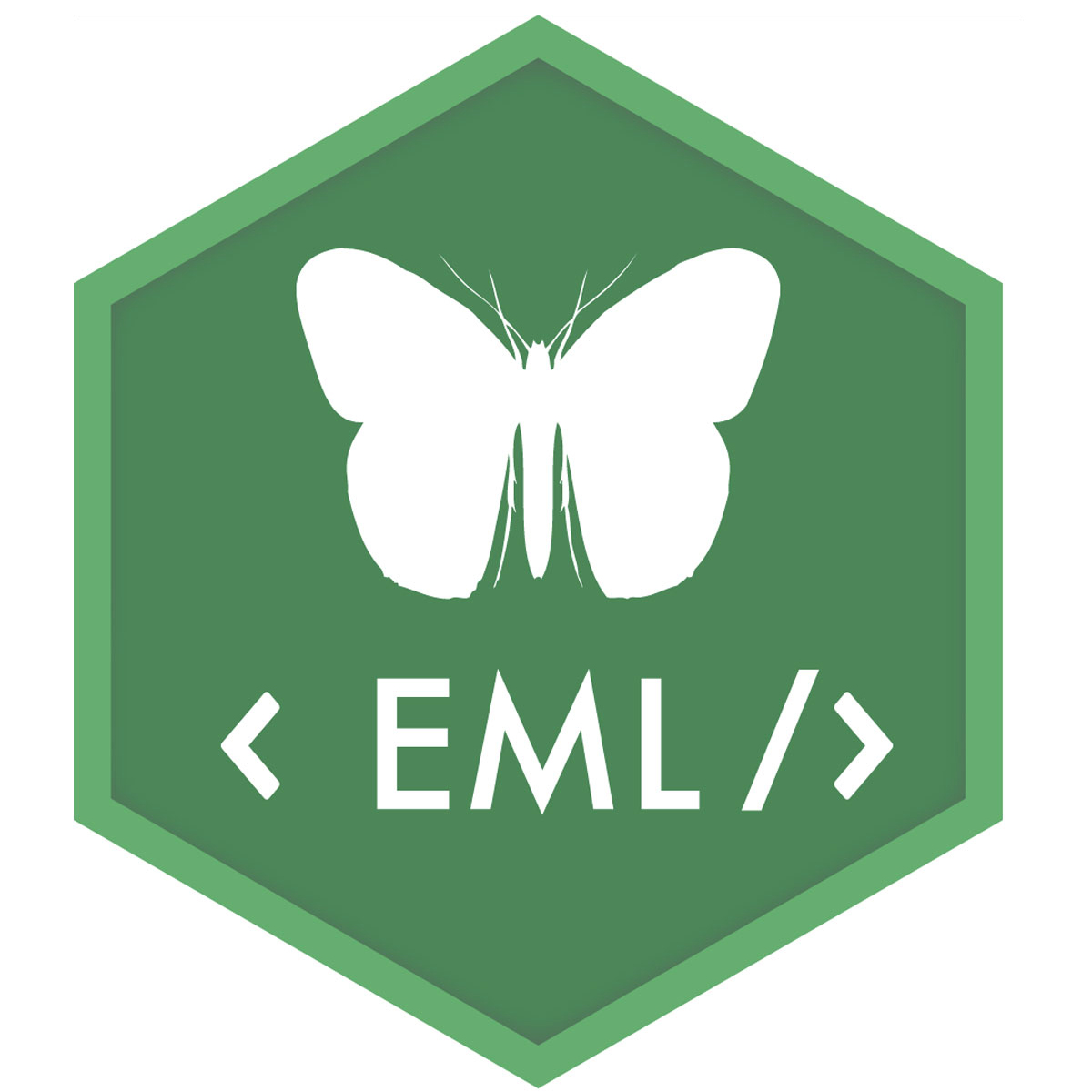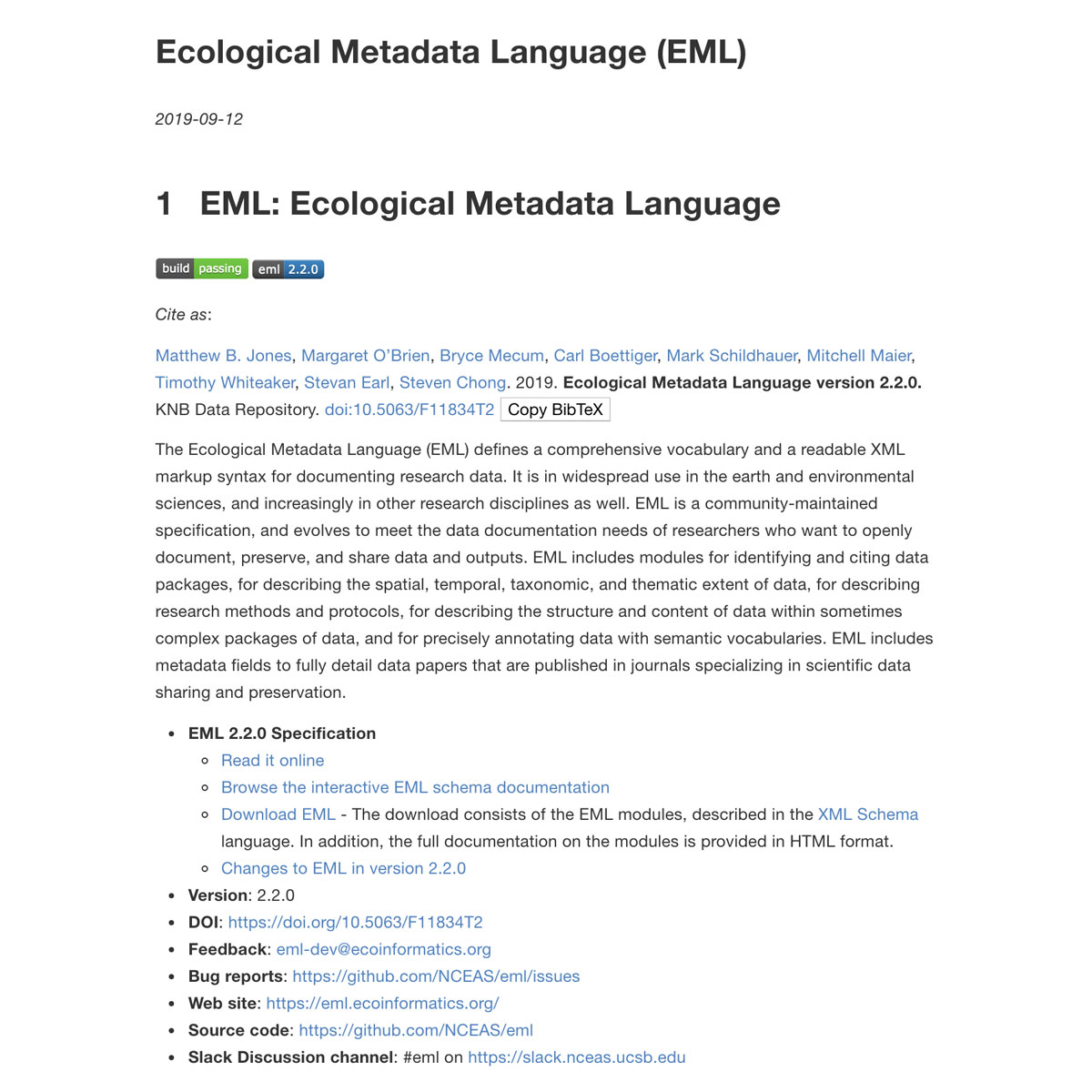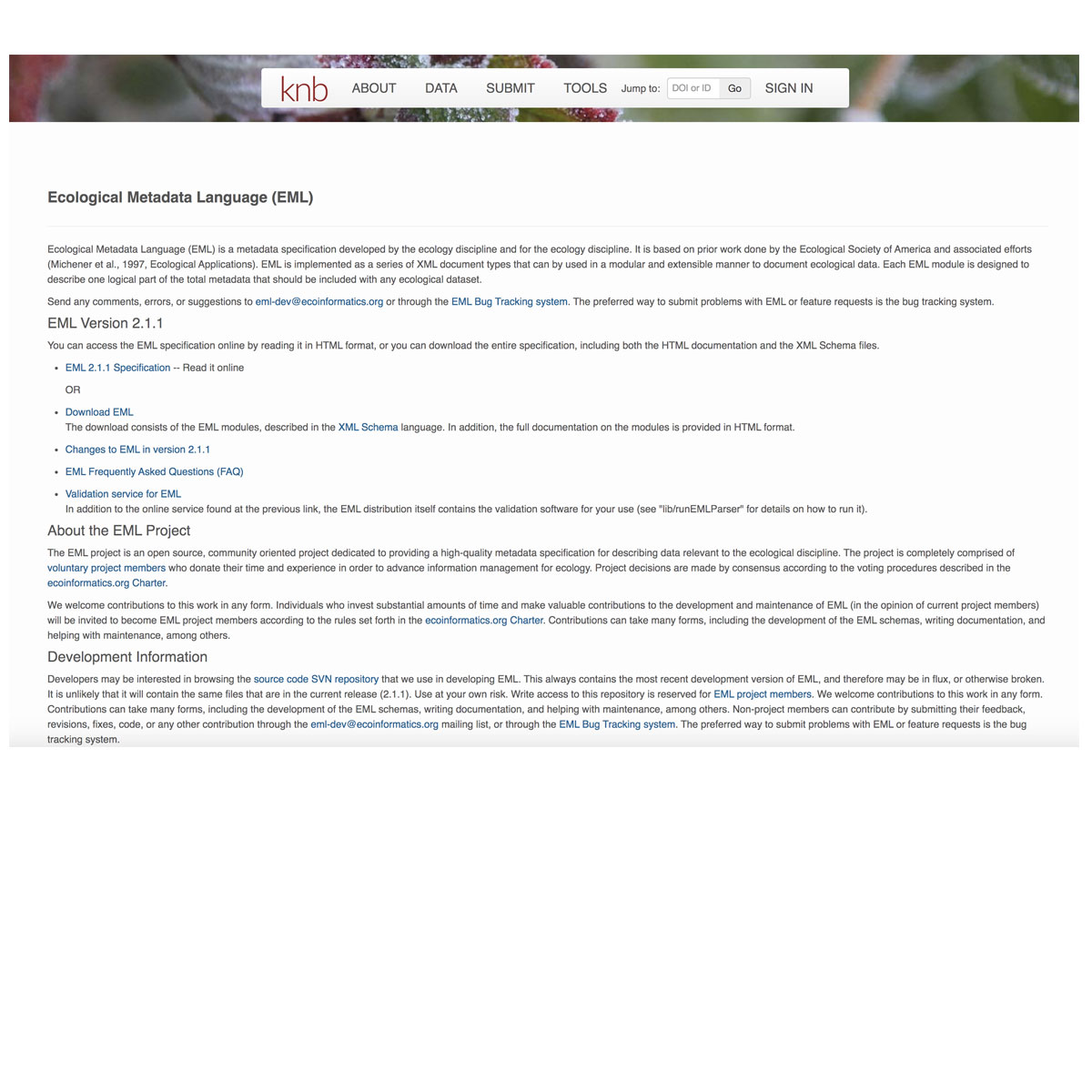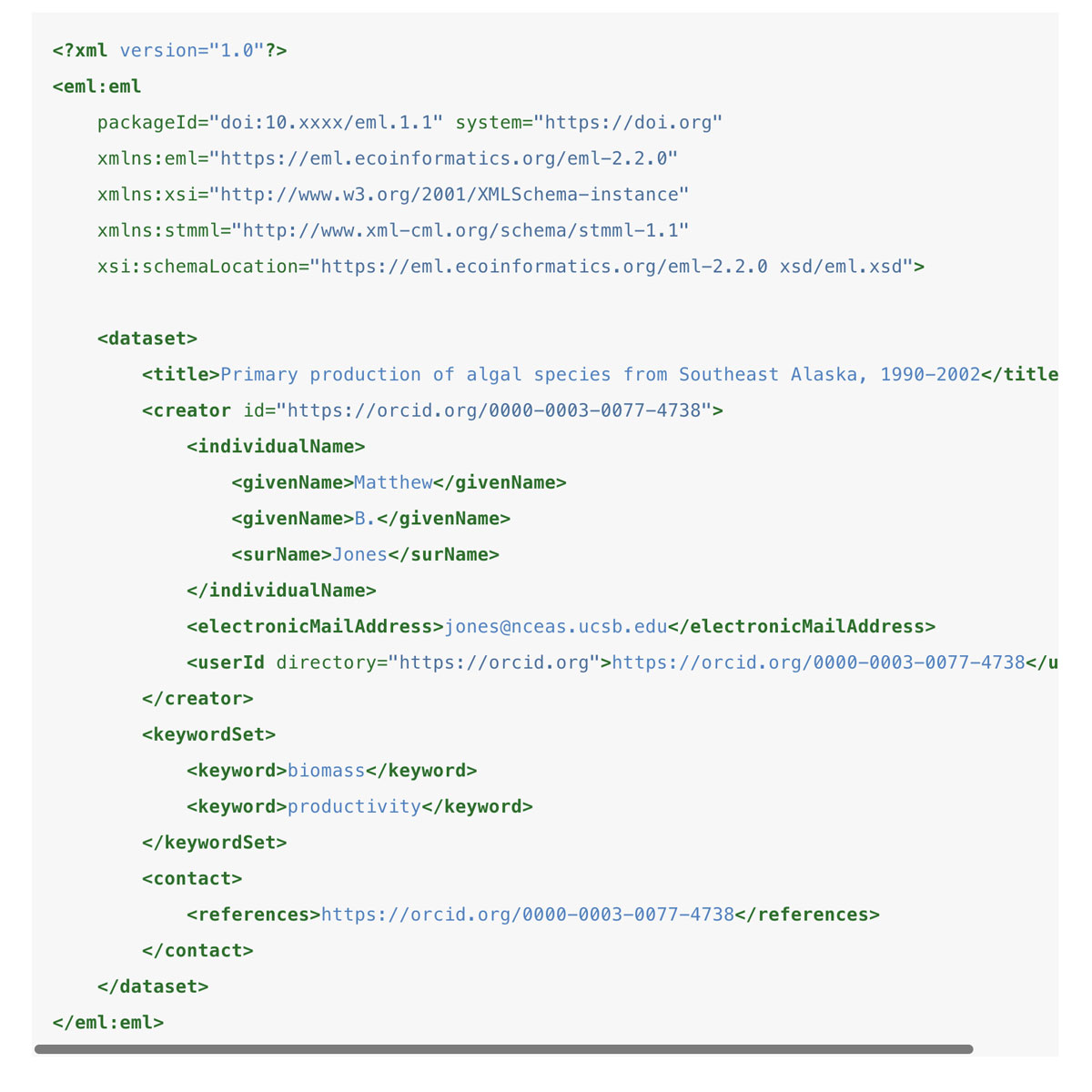



Ecological Metadata Language (EML) is a metadata specification developed by the ecology discipline and for the ecology discipline. It is based on prior work done by the Ecological Society of America and associated efforts (Michener et al., 1997, Ecological Applications). EML is implemented as a series of XML document types that can by used in a mod ...
DOI: 10.5063/F11834T2
Last Update: 2011
Data management Data collection Species populations Community composition Genetic composition Ecosystem structure Ecosystem function Species traits Terrestrial Marine Freshwater Plants Mammals Reptiles Butterflies Other Invertebrates Birds Fishes Amphibians Macroinvertebrates
Login to add the tool into your favorites.
Ecological Metadata Language (EML) is a metadata specification developed by the ecology discipline and for the ecology discipline. It is based on prior work done by the Ecological Society of America and associated efforts (Michener et al., 1997, Ecological Applications). EML is implemented as a series of XML document types that can by used in a modular and extensible manner to document ecological data. Each EML module is designed to describe one logical part of the total metadata that should be included with any ecological dataset.
| Contact person: | The Knowledge Network for Biocomplexity (KNB) |
|---|---|
| Contact e-mail: | eml-dev@ecoinformatics.org |
| Contact Organization: | The Knowledge Network for Biocomplexity (KNB) |
| License: | CC BY |
| Technical Status: | Unknown |
| URL(s): |
https://knb.ecoinformatics.org/external//emlparser/docs/index.html
https://knb.ecoinformatics.org/external//software/dist https://github.com/NCEAS/eml |
Login to add a review for the tool Ecological Metadata Language (EML)